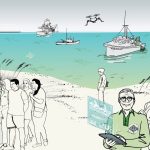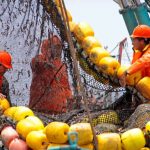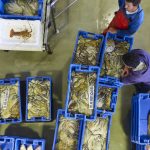NOAA’s Fisheries Service has prohibited the use of bottom trawl gear in 130,000 square nautical miles of the Bering Sea, an area where the gear has not been used previously, to protect the sea bottom habitat.
“This allows bottom fishing to continue where it has occurred historically, while protecting undisturbed habitats and nearshore bottom habitat that support subsistence marine resources and blue king crab,” said Doug Mecum, acting administrator for the Alaska region of NOAA’s Fisheries Service. “The rule, recommended by the North Pacific Fishery Management Council, protects large areas of sea bottom for the future, with minimal effect on today’s fisheries.”
The agency received over 6,000 public comments on the proposed rule, which was released for review in March. The majority of comments supported the action. No changes were made in the final rule from the proposed rule. The new closure is in addition to about 290,000 square nautical miles of habitat in the North Pacific that came under new protections in 2006.
Newly closed are the Bering Sea Habitat Conservation Area, the largest area covered by the new rule; the St. Lawrence Island Habitat Conservation Area; the St. Matthew Island Habitat Conservation Area; and the Nunivak Island, Etolin Strait, and Kuskokwim Bay Habitat Conservation Area.
Closing waters around St. Matthew Island will protect habitat for blue king crab, a species with fishing closures in place since 1999. Closures around St. Lawrence Island and Nunivak Island and within Etolin Strait and Kuskokwim Bay support subsistence species such as halibut, which inhabit the sea floor, and walrus, which feed from the sea floor.
In one of the areas closed to commercial bottom trawling, the Northern Bering Sea Research Area, scientists will study the effects of bottom trawling on habitat.
The new rule implements Amendment 89 to the Fishery Management Plan for Groundfish of the Bering Sea and Aleutian Islands Management Area. The closures apply to federally permitted fishing vessels








